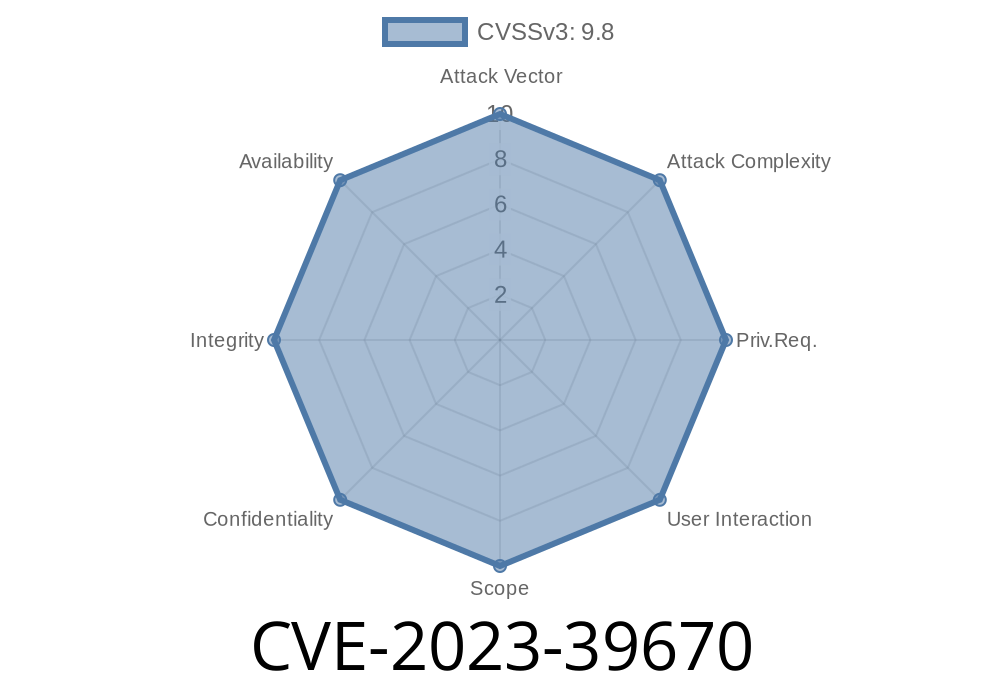A critical buffer overflow vulnerability, CVE-2023-39670, was recently discovered in Tenda AC6 _US_AC6V1.BR_V15.03.05.16 routers. This post provides an in-depth analysis of the vulnerability, discusses the exploitation of the routers, and suggests some measures you can take to mitigate the issue.
Overview
The buffer overflow vulnerability resides in the fgets function used within the router's firmware. Successful exploitation of this vulnerability can lead to denial of service and potentially remote code execution, allowing attackers to gain unauthorized access to your network and connected devices.
Vulnerability Details
The vulnerability exists due to improper handling of input data by Tenda AC6 _US_AC6V1.BR_V15.03.05.16's fgets function. In specific, the fgets function does not perform proper bounds checking, which allows an attacker to overflow the buffer and overwrite adjacent memory locations. This can lead to arbitrary code execution or a denial of service (DoS) scenario.
Code Snippet
The following code snippet illustrates the vulnerable fgets function in Tenda AC6 _US_AC6V1.BR_V15.03.05.16 firmware:
char buffer[512];
fgets(buffer, sizeof(buffer), stdin);
As shown above, fgets reads from stdin and writes the data into the buffer without proper bounds checking. If an attacker supplies more than 512 bytes of input, the function will continue to write past the designated buffer size and overwrite memory locations, causing a buffer overflow.
Exploit Details
An attacker can exploit this vulnerability by sending a crafted input to the Tenda AC6 _US_AC6V1.BR_V15.03.05.16 router that would trigger the buffer overflow. To do this, the attacker would typically need to be connected to the network or use a connected device as an intermediate vector.
An example of an exploit might involve sending a specially crafted packet containing more than 512 bytes of data to the router, causing the fgets function to overwrite adjacent memory locations.
Original References
- CVE-2023-39670
- Tenda AC6 _US_AC6V1.BR_V15.03.05.16 Firmware
Mitigation Strategies
To protect your Tenda AC6 _US_AC6V1.BR_V15.03.05.16 router from the CVE-2023-39670 vulnerability, consider the following recommendations:
1. Regularly update your router's firmware. Tenda may release a patch to fix this vulnerability in future firmware updates. Keep an eye on their official website for firmware notifications and installation instructions.
2. Limit access to your router's administration panel. Restrict access to trusted devices and users only.
3. Enable strong authentication and access controls. Utilize strong, unique passwords, and consider enabling two-factor authentication (2FA) if supported by your router.
4. Monitor your network for signs of unauthorized access or suspicious activity. Regularly review network logs and traffic to identify potential attackers.
Conclusion
The CVE-2023-39670 buffer overflow vulnerability in Tenda AC6 _US_AC6V1.BR_V15.03.05.16 routers poses a significant risk to connected devices and network security. By understanding the details and exploit methods, you can take the necessary steps to protect your network and devices by implementing mitigation strategies and staying informed about any firmware updates provided by Tenda.
Timeline
Published on: 08/18/2023 03:15:22 UTC
Last modified on: 08/23/2023 19:13:26 UTC
